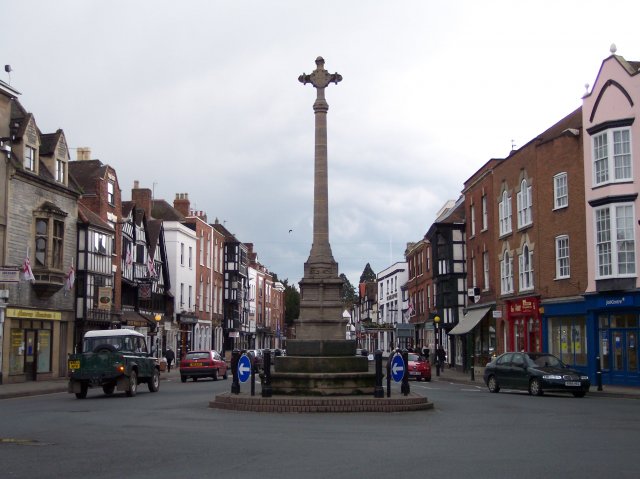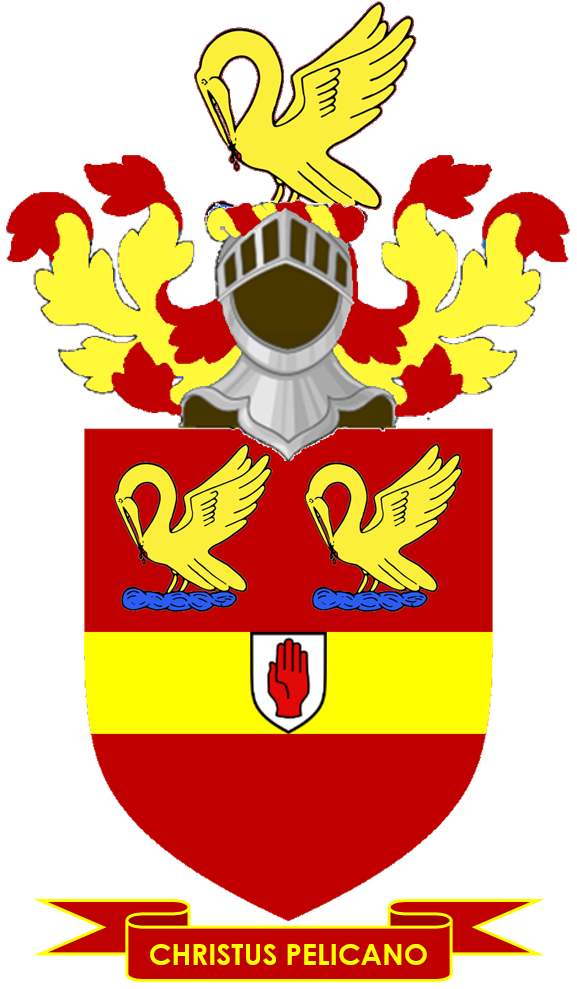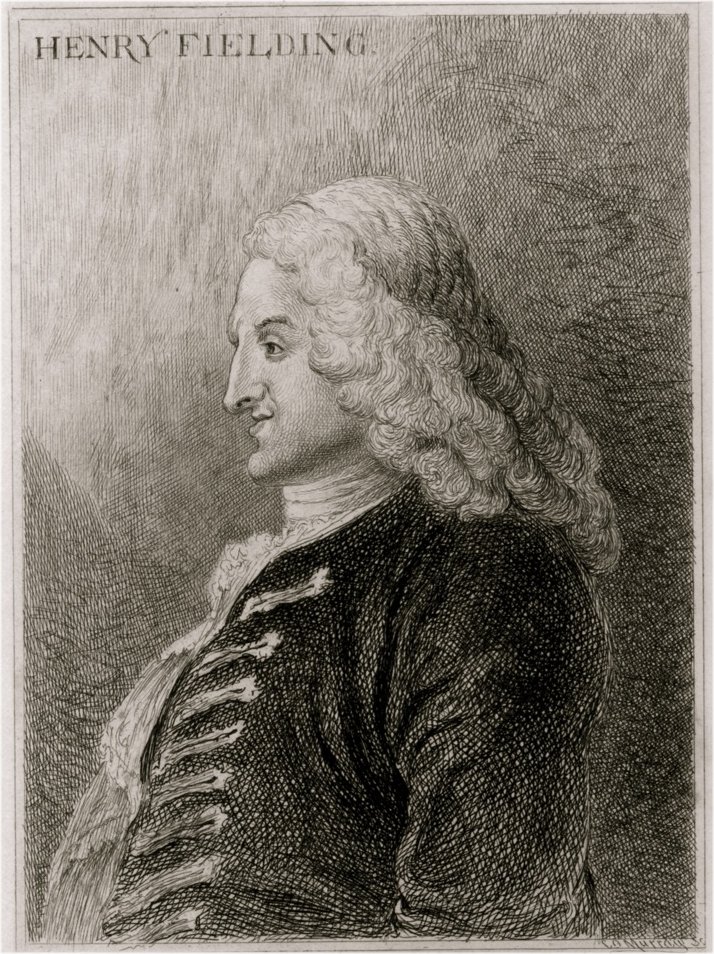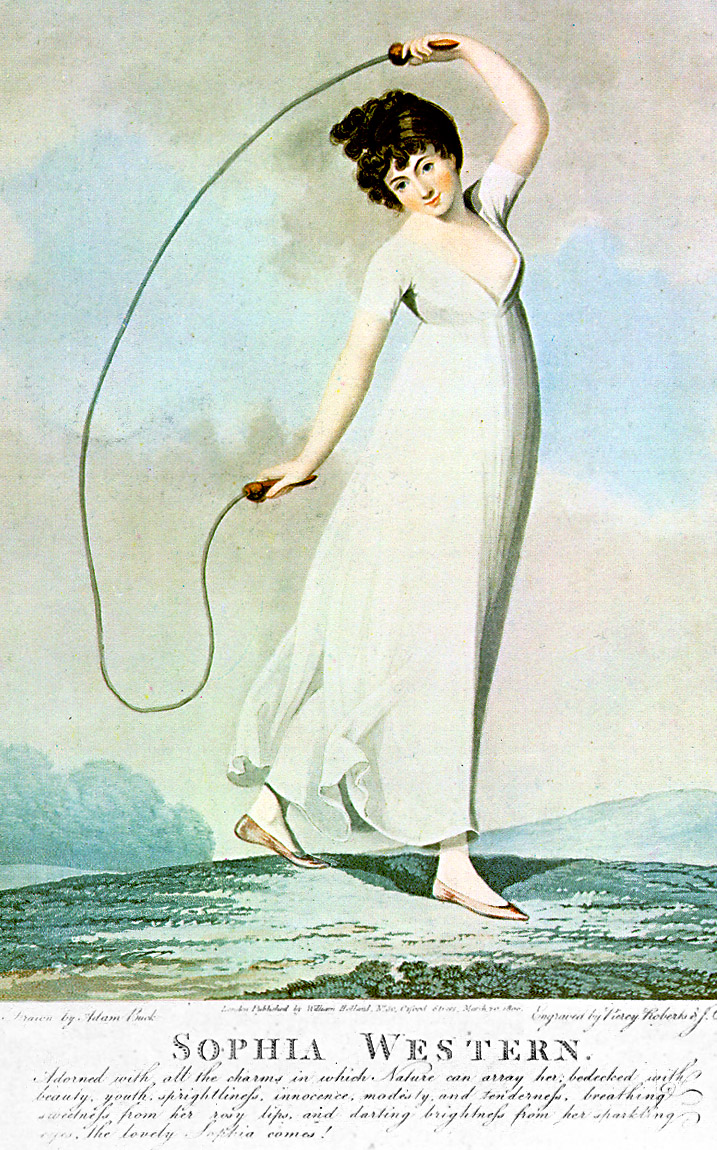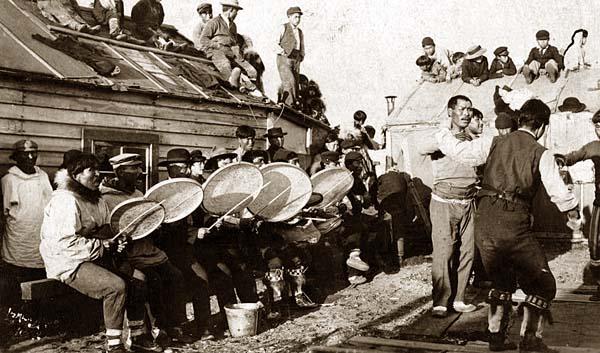|
Upton-on-Severn
Upton-upon-Severn (or Upton on Severn, etc. and locally simply Upton) is a town and civil parish in the Malvern Hills District of Worcestershire, England. Lying on the A4104 (formerly A440), the 2011 census recorded a population of 2,881 for the town. Upton is situated on the west bank of the River Severn and is located southeast of Malvern. The town has a distinctive tower and copper-clad cupola – known locally as the " Pepperpot" – the only surviving remnant of the former church. Its replacement, also dedicated to St Peter and St Paul, was designed by Sir Arthur Blomfield. History Until the later half of the 20th century, the bridge at Upton was the only one across the River Severn between Worcester and Tewkesbury; the present bridge was built in 1940. Oliver Cromwell's soldiers crossed the Severn here to win the battle of Upton before the main Battle of Worcester in the English Civil War. Today The population of the civil parish in 2011 was recorded at 2,881 – an i ... [...More Info...] [...Related Items...] OR: [Wikipedia] [Google] [Baidu] |
Malvern Hills (district)
Malvern Hills is a local government district in Worcestershire, England. Its council is based in the town of Malvern, and its area covers most of the western half of the county, including the outlying towns of Tenbury Wells and Upton-upon-Severn. It was originally formed in 1974 and was subject to a significant boundary reform in 1998. In the 2011 census the population of the Malvern Hills district was 74,631. History In 1974 the district of Malvern Hills was created from the former districts of Bromyard Rural District and Ledbury Rural District in Herefordshire, along with Malvern Urban District and Martley Rural District and Upton upon Severn Rural District in Worcestershire. The current boundaries were formed on 1 April 1998 when the county of Hereford and Worcester (which had been created in 1974, following the Local Government Act 1972) reverted, with some border changes, to the two former counties of Worcestershire and Herefordshire. The new Malvern Hills district bou ... [...More Info...] [...Related Items...] OR: [Wikipedia] [Google] [Baidu] |
Upton Blues Festival
The Upton Blues Festival is a music festival held annually in the United Kingdom at Upton-on-Severn, Worcestershire, usually staged on the third weekend of July. Formed in 2001, seven local people each put £10 each to create a basic fund. The first festival in 2002 had 19 acts over the weekend in a few of the towns pubs, it is now one of the largest festivals in Worcestershire and the middle River Severn area. The festival was heavily affected by the 2007 United Kingdom floods. Despite the weather and funding issues the festival continued with a new committee in 2008 and has grown rapidly since then. It now has three main stages and nine pub venues with over 135 gigs throughout the weekend in 2017, swamping this lovely riverside town with people and music. Nominated in the UK Festivals Awards in 2012 this volunteer-run festival was up against the biggest professional festivals in the country. Winners of Visit Worcestershire Award "Best Festival & Events Award" in 2014 Winners ... [...More Info...] [...Related Items...] OR: [Wikipedia] [Google] [Baidu] |
Malvern Hills District
Malvern Hills is a local government district in Worcestershire, England. Its council is based in the town of Malvern, and its area covers most of the western half of the county, including the outlying towns of Tenbury Wells and Upton-upon-Severn. It was originally formed in 1974 and was subject to a significant boundary reform in 1998. In the 2011 census the population of the Malvern Hills district was 74,631. History In 1974 the district of Malvern Hills was created from the former districts of Bromyard Rural District and Ledbury Rural District in Herefordshire, along with Malvern Urban District and Martley Rural District and Upton upon Severn Rural District in Worcestershire. The current boundaries were formed on 1 April 1998 when the county of Hereford and Worcester (which had been created in 1974, following the Local Government Act 1972) reverted, with some border changes, to the two former counties of Worcestershire and Herefordshire. The new Malvern Hills district bou ... [...More Info...] [...Related Items...] OR: [Wikipedia] [Google] [Baidu] |
Tewkesbury
Tewkesbury ( ) is a medieval market town and civil parish in the north of Gloucestershire, England. The town has significant history in the Wars of the Roses and grew since the building of Tewkesbury Abbey. It stands at the confluence of the River Severn and the River Avon, and thus became an important trading point, which continued as railways and later M5 and M50 motorway connections were established. The town gives its name to the Borough of Tewkesbury, due to the earlier governance by the Abbey, yet the town is the second largest settlement in the Borough. The town lies on border with Worcestershire, identified largely by the Carrant Brook (a tributary of the River Avon). The name Tewkesbury is thought to come from Theoc, the name of a Saxon who founded a hermitage there in the 7th century, and in the Old English language was called '. Toulmin Smith L., ed. 1909, ''The Itinerary of John Leland'', London, IV, 150 An erroneous derivation from Theotokos (the Greek title of Ma ... [...More Info...] [...Related Items...] OR: [Wikipedia] [Google] [Baidu] |
Hanley Castle High School
Hanley Castle High School is a non-selective mixed secondary school and sixth form centre located in the village of Hanley Castle, 1.4 miles (2.2 km) from the small town of Upton-upon-Severn, Worcestershire. It was formerly known as Hanley Castle Grammar School, and was probably founded in 1326, making it one of the oldest schools in England. For much of the 20th century it was a selective boys grammar school that grew from about 50 to around 200 day-pupils and boarders. In 1972, the school opened its doors to girls. In 1974 it became a mixed gender, voluntary controlled comprehensive school and it started to intake pupils at age 14 on transfer from the Hill School in nearby Upton-upon-Severn. The school reverted to being an 11–18 school in the 1990s and the population of students grew over time to around 1022 on roll in 2017. In 2011 the school became an academy. The campus comprises 17th century Grade II listed buildings that are still in use alongside those of the ma ... [...More Info...] [...Related Items...] OR: [Wikipedia] [Google] [Baidu] |
West Worcestershire (UK Parliament Constituency)
West Worcestershire is a constituency in Worcestershire represented in the House of Commons of the UK Parliament since 2010 by Harriett Baldwin, a Conservative. The constituency is considered a safe seat for the Conservatives. The constituency boundaries roughly correspond with the Malvern Hills District. Members of Parliament MPs 1832–1885 ;Worcestershire West MPs since 1997 Constituency profile The constituency boundaries roughly correspond with the Malvern Hills District. The seat is known for its hilly landscape: with products such as regional speciality cheeses, drinks and mineral water, a major economic sector is tourism and leisure. However, the principal industries are in agriculture; food; chemicals; distribution; waste and mineral processing; printing and publishing; and transport and retail. Workless claimants who were registered jobseekers were in November 2012 significantly lower than the national average of 3.8%, at 2.1% of the population based on a ... [...More Info...] [...Related Items...] OR: [Wikipedia] [Google] [Baidu] |
Battle Of Upton
The Battle of Upton was fought on 28 August 1651 when a New Model Army detachment under the command of Colonel John Lambert made a surprise attack on Royalists defending the river Severn crossing at Upton-upon-Severn, below Worcester. In the action which followed the Royalist commander Major General Edward Massey was severely wounded and the surviving Royalists were driven out of the town and north along the Worcester Road. The successful attack allowed Parliamentary forces to approach Worcester from the west and was an important action in completing Cromwell's investment of Worcester as a prelude to his assault and capture of the city. Prelude On his return from Scotland Oliver Cromwell took command of the Parliamentary forces arrayed against the Royalist army encamped in and around Worcester. Initially he concentrated his forces at Evesham which blocked any Royalist advance on London. Cromwell's force at Evesham were increasing daily. By the time he arrived in person ... [...More Info...] [...Related Items...] OR: [Wikipedia] [Google] [Baidu] |
Henry Fielding
Henry Fielding (22 April 1707 – 8 October 1754) was an English novelist, irony writer, and dramatist known for earthy humour and satire. His comic novel '' Tom Jones'' is still widely appreciated. He and Samuel Richardson are seen as founders of the traditional English novel. He also holds a place in the history of law enforcement, having used his authority as a magistrate to found the Bow Street Runners, London's first intermittently funded, full-time police force. Early life Fielding was born 22 April 1707 at Sharpham, Somerset, and educated at Eton College, where he began a lifelong friendship with William Pitt the Elder. His mother died when he was 11. A suit for custody was brought by his grandmother against his charming but irresponsible father, Lt Gen. Edmund Fielding. The settlement placed Henry in his grandmother's care, but he continued to see his father in London. In 1725, Henry tried to abduct his cousin Sarah Andrews (with whom he was infatuated) while she was on ... [...More Info...] [...Related Items...] OR: [Wikipedia] [Google] [Baidu] |
The History Of Tom Jones, A Foundling
''The History of Tom Jones, a Foundling'', often known simply as ''Tom Jones'', is a comic novel by English playwright and novelist Henry Fielding. It is a ''Bildungsroman'' and a picaresque novel. It was first published on 28 February 1749 in London and is among the earliest English works to be classified as a novel. It is the earliest novel mentioned by W. Somerset Maugham in his 1948 book '' Great Novelists and Their Novels'' among the ten best novels of the world. The novel is highly organised despite its length. Samuel Taylor Coleridge argued that it has one of the "three most perfect plots ever planned", alongside ''Oedipus Tyrannus'' and ''The Alchemist''. It became a best seller with four editions published in its first year alone. It is generally regarded as Fielding's greatest book and as an influential English novel. Plot The novel's events occupy eighteen books. It opens with the narrator stating that the purpose of the novel will be to explore "human nature". The k ... [...More Info...] [...Related Items...] OR: [Wikipedia] [Google] [Baidu] |
John Dee
John Dee (13 July 1527 – 1608 or 1609) was an English mathematician, astronomer, astrologer, teacher, occultist, and alchemist. He was the court astronomer for, and advisor to, Elizabeth I, and spent much of his time on alchemy, divination, and Hermetic philosophy. As an antiquarian, he had one of the largest libraries in England at the time. As a political advisor, he advocated the foundation of English colonies in the New World to form a "British Empire", a term he is credited with coining. Dee eventually left Elizabeth's service and went on a quest for additional knowledge in the deeper realms of the occult and supernatural. He aligned himself with several individuals who may have been charlatans, travelled through Europe and was accused of spying for the English crown. Upon his return to England, he found his home and library vandalised. He eventually returned to the Queen's service, but was turned away when she was succeeded by James I. He died in poverty in London ... [...More Info...] [...Related Items...] OR: [Wikipedia] [Google] [Baidu] |
Pepperpot Upton
Pepperpot or pepper pot may refer to: * A pepper shaker * Several types of soup including ** Guyana Pepperpot, an Amerindian dish popular in Guyana and the Caribbean ** Philadelphia Pepper Pot, a thick stew of beef tripe, vegetables, pepper and other seasonings * Mrs. Pepperpot, a fictional character in a series of children's books * Pepper Pot, Brighton, a building in Brighton, England * Pepper Pot Centre, a charity supporting people from African, Caribbean and BME communities in West London * Pepperpot, Godalming, a building in Godalming, Surrey, England * Pepperpot (lighthouse), a type of small lighthouse * Pepperpot (revolver), a multi-shot handheld firearm * A microscopic structure on butterfly wings that causes Iridescence * "Pepperpots", a series of British middle-age female characters on ''Monty Python's Flying Circus'' * The name of a dance figure in the Quickstep * Pepper-potting, a military tactic used in individual movement techniques * A fungus of the genus Myriosto ... [...More Info...] [...Related Items...] OR: [Wikipedia] [Google] [Baidu] |
Folk Festival
A folk festival celebrates traditional folk crafts and folk music. This list includes folk festivals worldwide, except those with only a partial focus on folk music or arts. Folk festivals may also feature folk dance or ethnic foods. Handicrafting has long been exhibited at such events and festival-like gatherings, as it has its roots in the rural crafts. Like folk art, handicraft output often has cultural, political, and/or religious significance. Folk art encompasses art produced from an indigenous culture or by peasants or other laboring tradespeople. In contrast to fine art, folk art is primarily utilitarian and decorative rather than purely aesthetic, and is often sold at festivals by tradespeople or practicing amateurs.West, Shearer (general editor), ''The Bullfinch Guide to Art History'', page 440, Bloomsbury Publishing Plc, United Kingdom, 1996. As at folk festivals, such art and handicraft may also appear at historical reenactments and events such as Renaissance fairs. ... [...More Info...] [...Related Items...] OR: [Wikipedia] [Google] [Baidu] |



